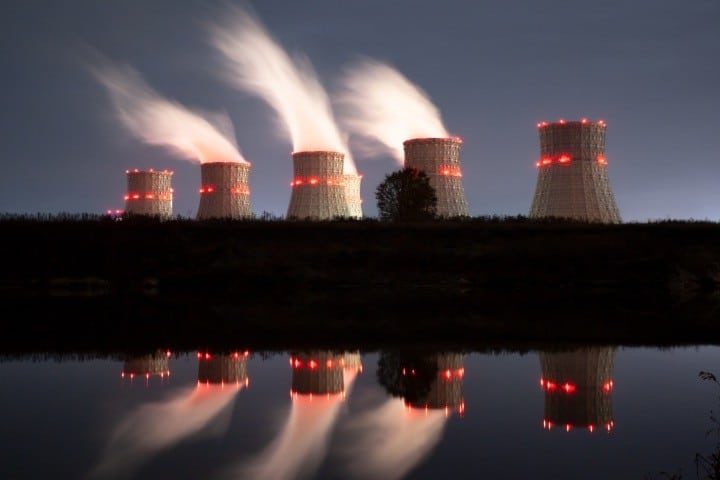
In an article that appeared in the November 2016 edition of Nuclear News, “Nuclear power: How environmentalism lost its way,” Paul Lorenzini states that the nuclear power industry faces policy challenges that “have been imposed over a period of decades, largely at the insistence of a powerful environmental lobby reinforced by a campaign to intentionally exploit public fears.”
He says that given nuclear power’s environmental advantages — the fact that it is a noncarbon, high-energy resource; its small ecological footprint; and its minimal operating emissions — the intensity and single-mindedness of the opposition is difficult to explain. He further states that “opposition to nuclear power has become a legacy within environmentalism that is deeply entrenched,” and wonders how environmentalism got so lost.
Lorenzini points out that although support for nuclear power remained broad-based into the 1960s, a new environmentalism arose from the turmoil of that decade that challenged existing social structures, personal behaviors, and traditional conceptions of societal growth — in particular, what constitutes a “sustainable society that is humanly fulfilling.” The backlash of the sixties was fostered by the writings of Friedrich Nietzsche and Marxists C. Wright Mills and Herbert Marcuse.
A full-fledged antinuclear movement had become well organized and begun mobilizing a national resistance by 1974. The hostility toward nuclear power was symptomatic of the loss of trust in established institutions and the questioning of traditional values that began in the 1960s. While the antinuclear movement took to the streets with marches, sit-ins, civil disobedience, and physical trespass, public attitudes toward nuclear power did not begin to turn until the 1979 Three Mile Island accident.
Adversary Culture
The adversary culture that began in the 1960s and the influence it had on the antinuclear movement can be more clearly understood by looking at the roles played by Barry Commoner, Lynn White Jr., and E.F. Schumacher.
Commoner’s view, elucidated in his 1971 book The Closing Circle: Man, Nature and Technology, was that the “ecological crisis” was a consequence of uncontrolled technology, with technological advances rarely taking into account unintended effects on the environment. His opposition to nuclear power, at least initially, appeared to focus on the issue of radiation and its health effects, where he demanded an impossible standard of zero radiation exposures. The absurdity of this position was demonstrated by his unwillingness to even acknowledge that humanity is constantly exposed to sources of natural radiation with no adverse health consequences.
In 1967, Lynn White Jr. penned an article that appeared in the journal Science, entitled “The Historical Roots of Our Ecological Crisis.” In it he blamed the environmental problem on Christianity. He associated the “ecological crisis” with science and technology, with the added ethical dimension that humans were exploiting nature for selfish purposes under the guise of stewardship as mandated in Genesis 1:26. He argued for a spiritual pantheism that caught hold and became a defining feature of the new environmentalism.
Then, in 1973, E.F. Schumacher wrote the ideological gospel for the new environmentalism — a book entitled Small is Beautiful: Economics as if People Mattered. He saw Third World countries as an example of living in harmony with nature, claiming that these societies were living more satisfied lives. He therefore called for a massive restructuring of modern society to achieve this harmony with nature. “Small is beautiful” became a rallying cry for environmentalists.
Schumacher’s attack on nuclear-generated electricity was based more on the technology’s complexity than on environmental grounds. However, in the 1989 edition of the same book, he alleged that pollution of air, water, and soil with ionizing radiation from nuclear power plants is “an evil of incomparably greater dimension than anything mankind has known before.” While Schumacher was fanning the flames of radiophobia, he insisted he was not opposed to science and technology, just its “unwise” use.
Global Energy Policies
Lorenzini says that although Schumacher, Commoner, and White set the tone, it was Amory Lovins who provided the framework for subsequent global energy policies. Lovins spelled out his framework in the October 1976 issue of Foreign Affairs in his article “Energy Strategy: The Road Not Taken?” It was built around the themes of energy efficiency, renewable resources as a final objective, and no nuclear power plants. Lovins’ gave no consideration to environmental issues and challenges associated with “renewable” energy resources, assuming that any associated environmental impacts would be “relatively small” compared to alternative energy resources.
The problem with understanding the early evolution of the antinuclear movement, according to Lorenzini, is that it defies simple answers. He says that the movement arose from an ideological alliance between Schumacher’s new environmentalism — a growing cultural skepticism of science and technology — and the New Left that embodied a pervasive mistrust of government and the role of corporate power. He states that this alliance was further fortified by peace activists who had no interest in distinguishing between commercial nuclear power and nuclear weapons. Finally, Lorenzini states, the unifying element for this activist coalition was a legacy of mistrust and radiophobia from the nuclear-weapons-testing, radioactive-fallout debates combined with a sense of pending ecological catastrophe.
While Lorenzini may have accurately characterized the early evolution of the antinuclear movement, I believe it has since evolved into an anti-capitalist movement, in accordance with its Marxist roots which continues to fuel the public’s fear of radiation. Although it still professes an environmental concern (i.e., “climate change”), the rather obvious objective of today’s antinuclear movement is to achieve energy rationing, which will significantly disrupt the lives of all Americans. Electricity generated by nuclear power plants is affordable and reliable. And if it weren’t for the flawed linear, no-threshold (LNT) dose-response model and its corollary principle, “as low as reasonably achievable” (ALARA), used to regulate ionizing radiation exposures, it would also be extremely abundant. Electricity based on 100% renewables, on the other hand, will never be abundant or reliable. And because of renewables’ extremely low energy density, electricity generated by these resources will never be affordable in the absence of taxpayer-financed subsidies.
Energy rationing will also have a significant adverse effect on the production and distribution of food, as well as other consumer products. The chaos that will result from energy and food rationing will be exploited by the antinuclear Marxists to undermine the free enterprise system.
Other articles in this series:
Dispelling Irrational Fear of Radiation
Understanding Radiation Risks & Benefits
The Dynamic World of Radioactive Decay
Latest Low-dose Radiation Research Program a Retread?
Radiation Dose and Cancer Risk




